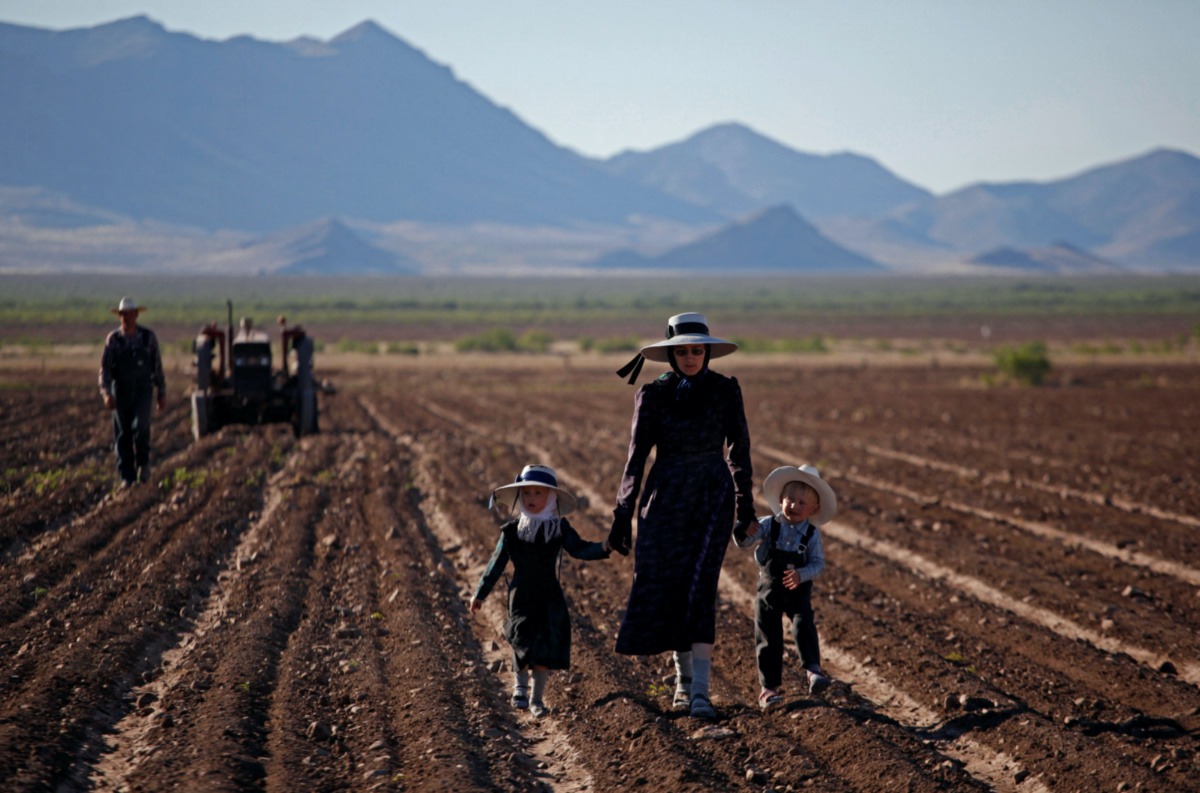
Photographer JOSE LUIS GONZALEZ and CASSANDRA GARRISON, of Reuters, delve into an archive of images showing life within the Mennonite community in Chihuahua, Mexico…
Ascencion, Mexico
Reuters
The Mennonite community in Chihuahua, Mexico, can trace its roots as far back as a century ago, when the first such settlers came seeking ideal farming land, isolation from the outside world and the preservation of their religion.
Here, their way of life is simple, with virtually no use of electricity or the internet. The community supports itself through its centuries-old tradition of farming: corn, chili peppers, cotton, onions.

A woman walks with her two children through an agricultural field in the Mennonite community of El Sabinal, Ascension, Chihuahua, Mexico, on 29th April, 2015. The community of El Sabinal, Spanish for “The Juniper”, was founded nearly 30 years ago in the dry, desert-like terrain of Chihuahua. Today, Mennonite farmers have transformed it into fruitful farmland, often using antique farm equipment. PICTURE: Reuters/Jose Luis Gonzalez
But life can be difficult for them as modern technology creeps closer to their doorstep. It’s not as easy to maintain their isolation as it was a hundred years ago.
From low water reserves due to drought worsened by climate change to the rising cost of diesel to run farming pumps, the community has its own set of challenges as it seeks to thrive and grow.
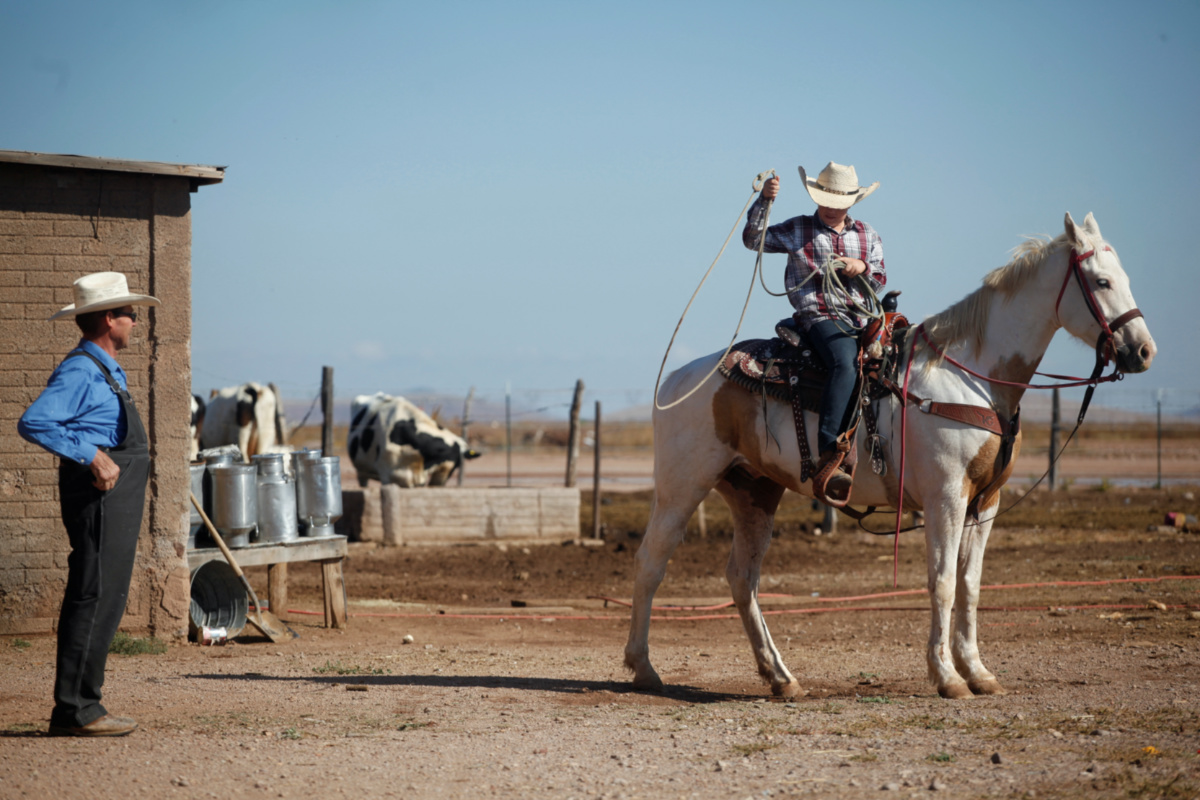
A father watches his son as he rides a horse outside his home in the Mennonite community of Buenos Aires, Janos, Chihuahua, Mexico, on 22nd October, 2014. Mennonites generally finish school by the age of 12. It is not uncommon to see a child younger than 10 operating a tractor or driving a horse-drawn buggy on the white, dusty roads within the community. PICTURE: Reuters/Jose Luis Gonzalez
For the last 100 years, Mexico has been home to Mennonite farmers, who migrated from Canada, where many still live.
Descendants of 16th-century Protestant Anabaptist radicals from Germany, the Low Countries and Switzerland, Mennonites rejected military service and the concept of a church hierarchy, suffering years of persecution and making them reliant on the patronage of rulers eager to exploit their belief that agriculture and faith are intertwined.
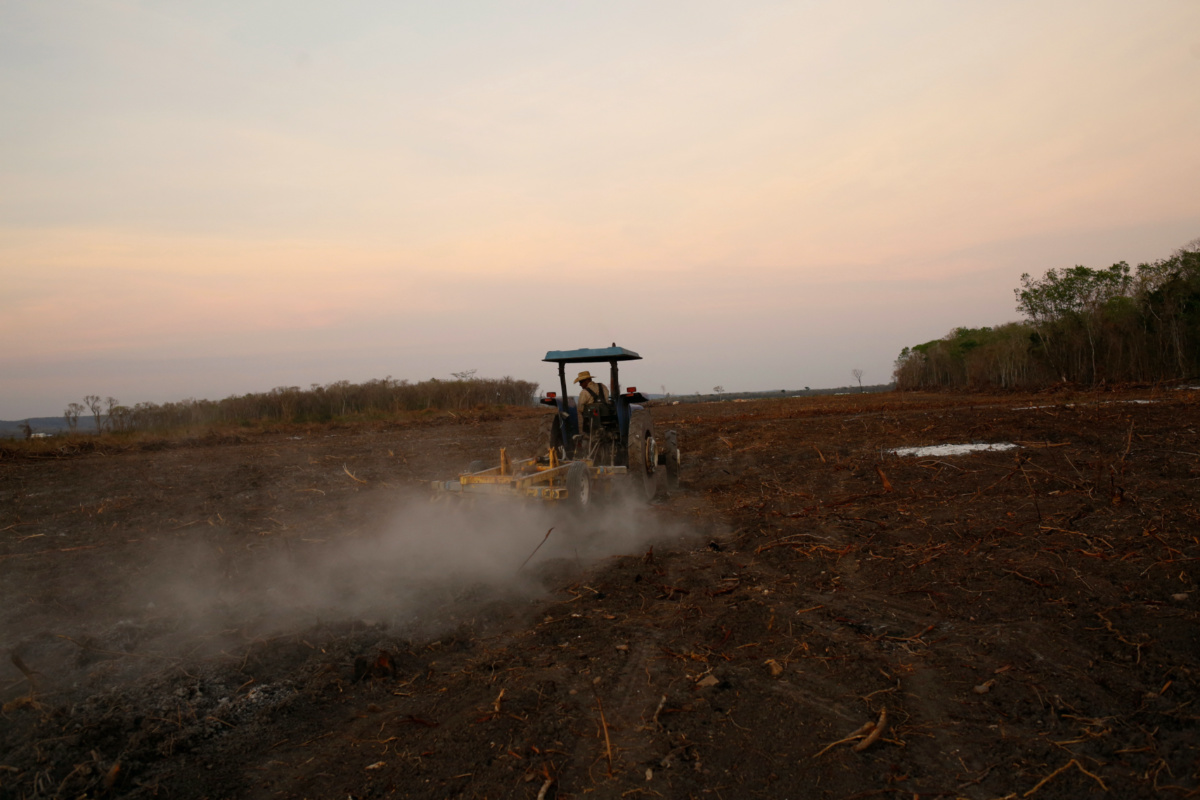
Girls play on swings outside a school in the Mennonite community of Buenos Aires, Janos, Chihuahua, Mexico, on 29th April 2015. From schools to general stores, almost everything the Mennonites need they have built for themselves within the confines of their own communities. Mennonites generally finish school by the age of 12. Boys and girls sit separately in classrooms, just as men and women do in church pews on Sundays. PICTURE: Reuters/Jose Luis Gonzalez
The community of El Sabinal – Spanish for “The Juniper” – was founded nearly 30 years ago in the dry, desert-like terrain of Chihuahua in northern Mexico. Today, Mennonite farmers have transformed it into fruitful farmland, often using antique farm equipment. They live in simple brick houses they build themselves, usually consisting of one open room.
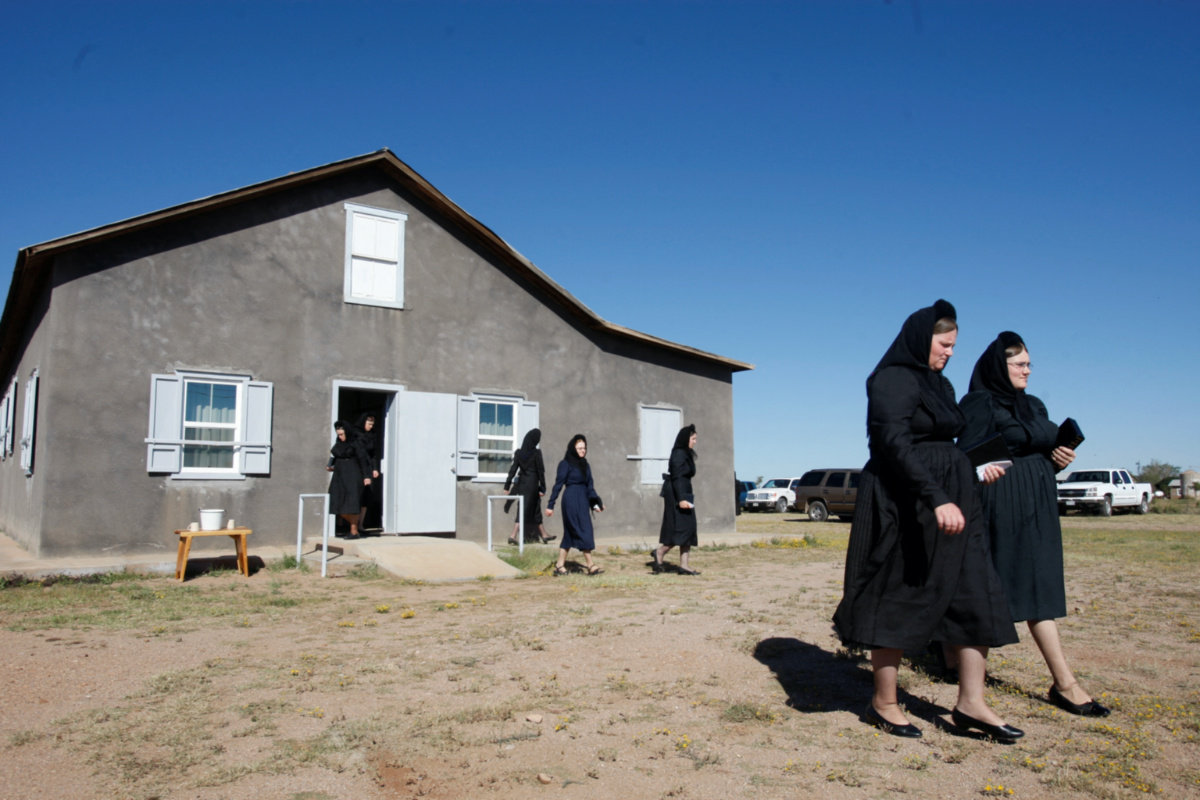
Women leave church after attending Sunday mass in the Mennonite community of Buenos Aires, Janos, Chihuahua, Mexico, on 30th September, 2012. PICTURE: Reuters/Jose Luis Gonzalez
As the Mennonites expanded their farmland in drought-prone Chihuahua, where they have several communities, the demand for water increased. Over the years, they have faced allegations of sinking illegal wells from local farmers who complain the government gives them preferential treatment.
We rely on our readers to fund Sight's work - become a financial supporter today!
For more information, head to our Subscriber's page.
“It is very expensive to pump diesel here. There is still water, but they have to sink more wells,” said Guillermo Andres, a Mennonite who arrived in El Sabinal as a teenager. His devout family eschews the use of electricity and pumps well water using diesel fuel, an increasingly costly practice.
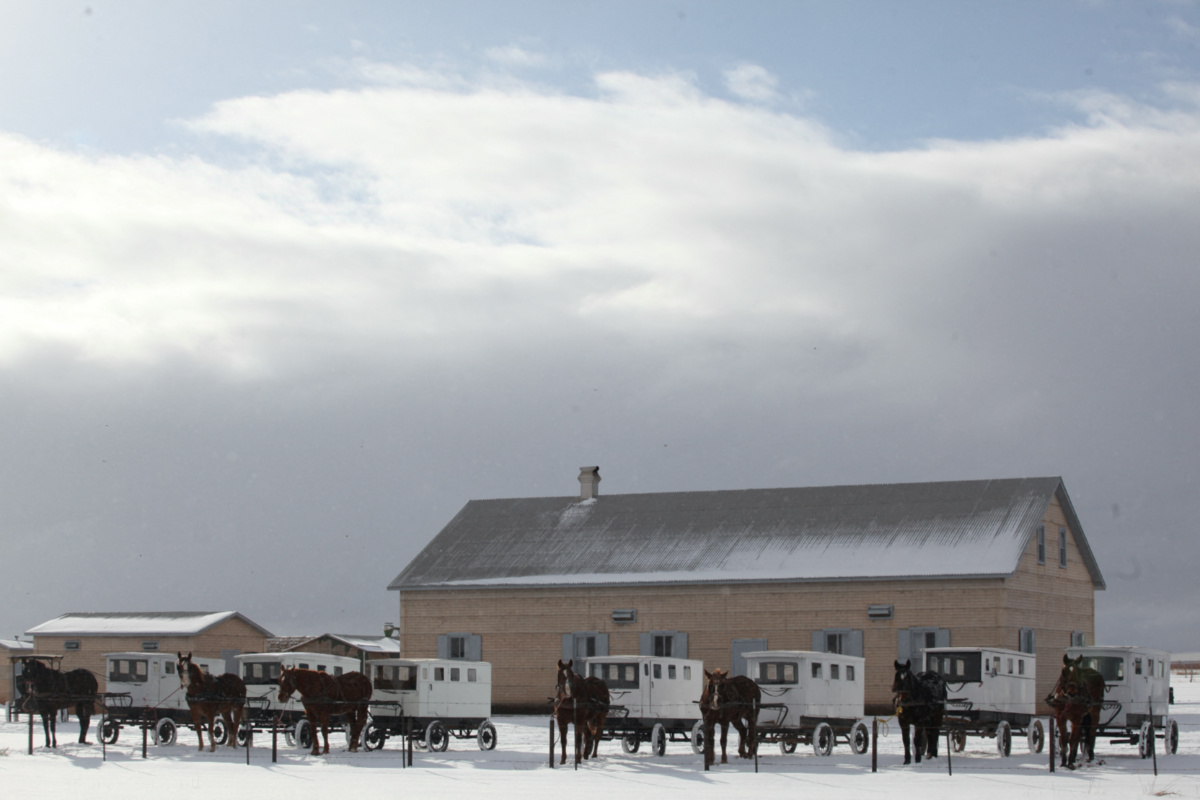
Horses tied to carts stand in the snow outside a church in the Mennonite community of El Sabinal, Ascension, Chihuahua, Mexico, on 27th December, 2015. PICTURE: Reuters/Jose Luis Gonzalez
The Mennonites’ native language is typically Plautdietsch, a unique blend of Low German, Prussian dialects and Dutch. Many Mennonites, especially men who interact with local laborers, also speak Spanish.
From schools to general stores, almost everything the Mennonites need they have built for themselves within the confines of their own communities.
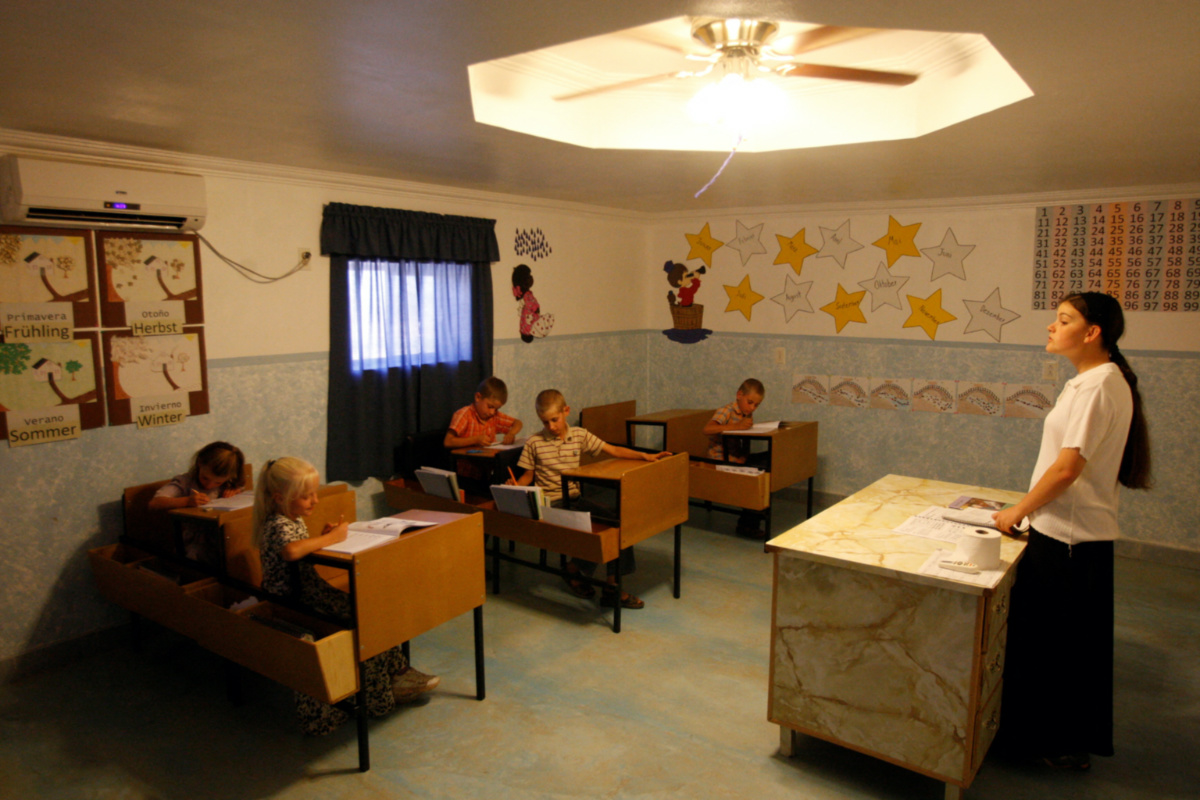
Children from the Mennonite community attend a class at their school in Cuauhtemoc, Chihuahua, Mexico, on 12th October. 2012. PICTURE: Reuters/Jose Luis Gonzalez
Mennonites generally finish school by the age of 12. Boys and girls sit separately in classrooms, just as men and women do in church pews on Sundays.
It is not uncommon to see a child younger than 10 operating a tractor or driving a horse-drawn buggy on the white, dusty roads within the community.
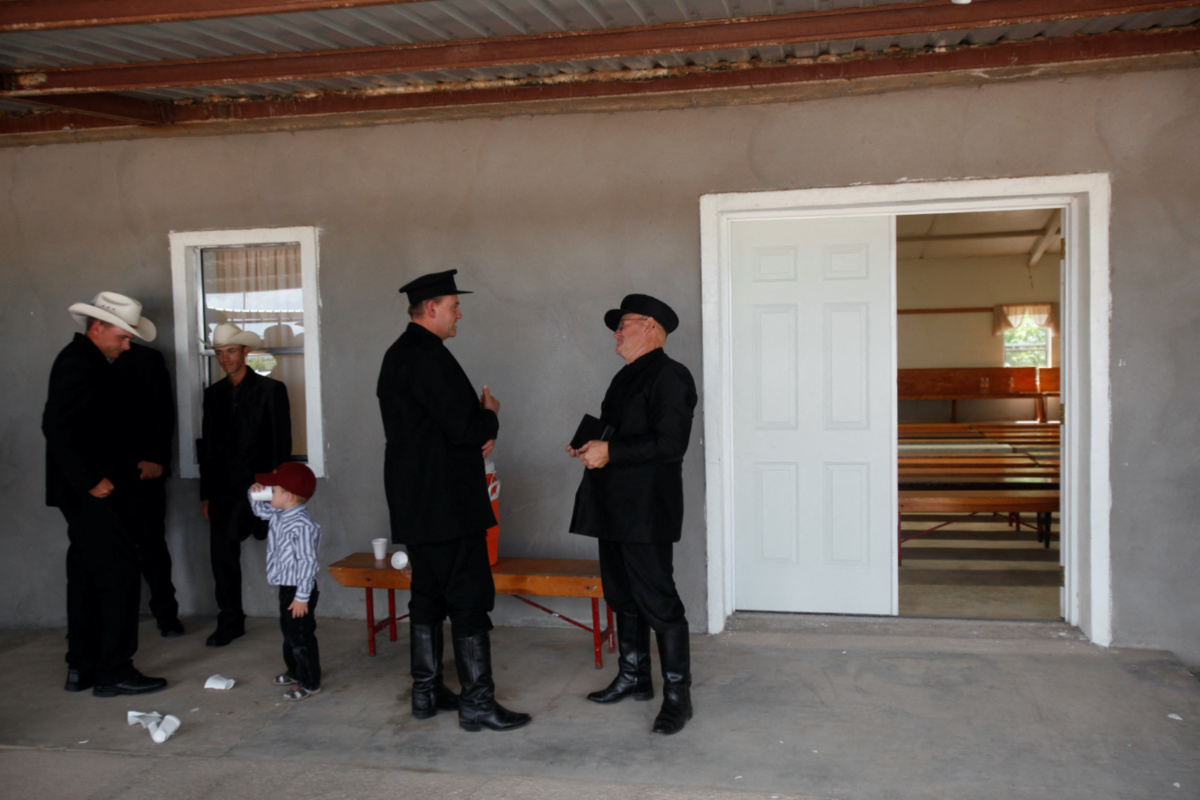
Community leaders speak in front of a church after celebrating a wedding in the Mennonite community of Buenos Aires, Janos, Chihuahua, Mexico, on 18th July, 2015. PICTURE: Reuters/Jose Luis Gonzalez.
These blue-eyed, blond-haired people marry young and focus on expanding their families. Many farmers said they had more than 10 children.
In this way, they practice their religion through their everyday life. Men tend to the fields while women maintain the gardens at home and care for the children.
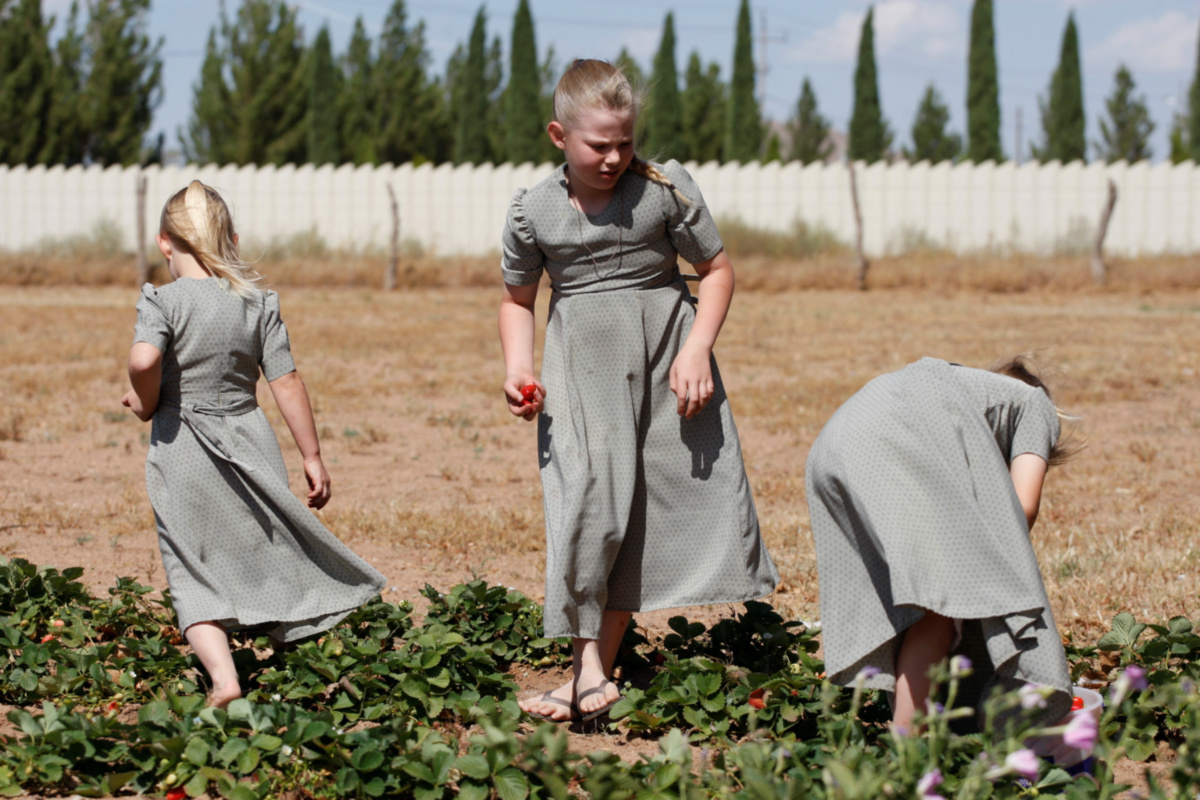
Girls harvest strawberries outside their home in the Mennonite community of Buenos Aires, Janos, Chihuahua, Mexico, on 12th October, 2012. PICTURE: Reuters/Jose Luis Gonzalez.
The Mennonites’ interaction with the outside world is mostly restricted to their relationships with local people who work for them as labourers in the community or to trips into town to buy goods.
“The traditions are living quietly in a neighbourhood without trucks, without rubber tires, without electricity,” Andres said. “Our traditions come from Russia, from Russia to Canada and from Canada to Mexico.
“I don’t know about it [technology]; that’s how I was born and that’s how I’ve been all my life; that’s how I like to continue,” he added.
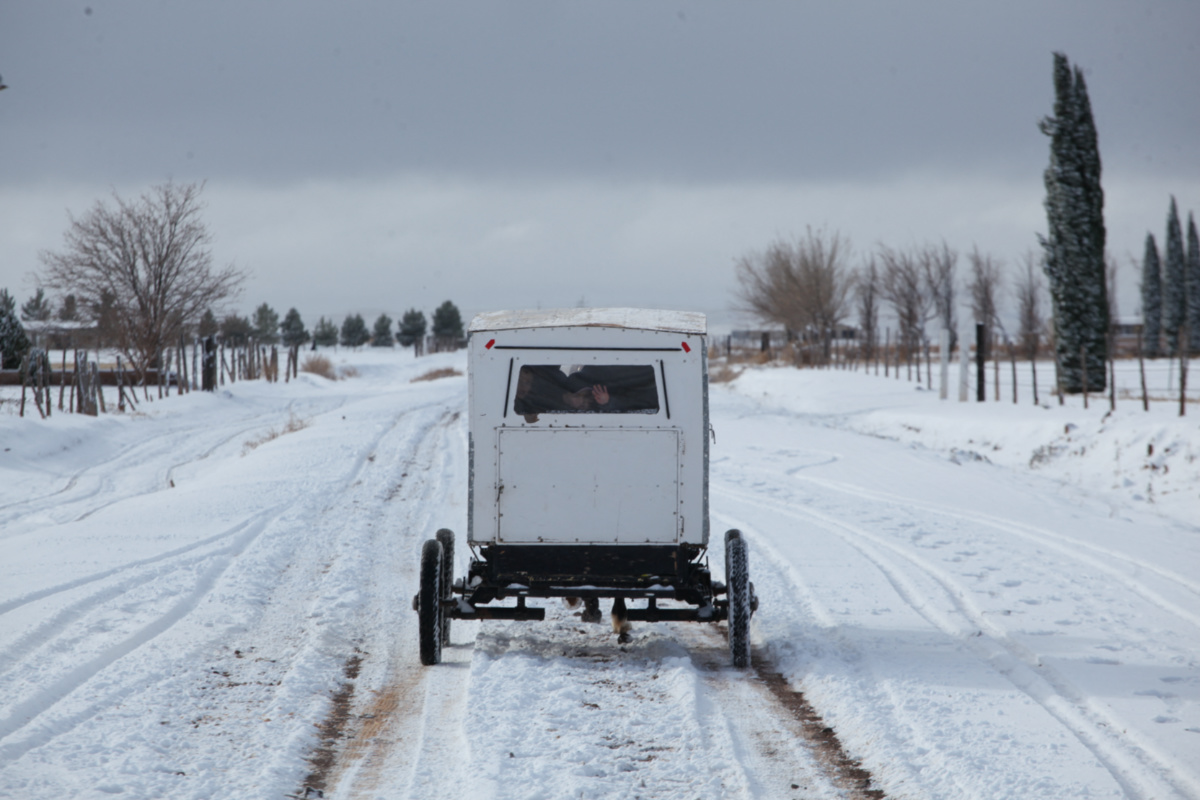
A child waves from a cart travelling through the snow, after attending church with his parents, in the Mennonite community of El Sabinal, Ascension, Chihuahua, Mexico, on 27th December, 2015. PICTURE: Reuters/Jose Luis Gonzalez.





